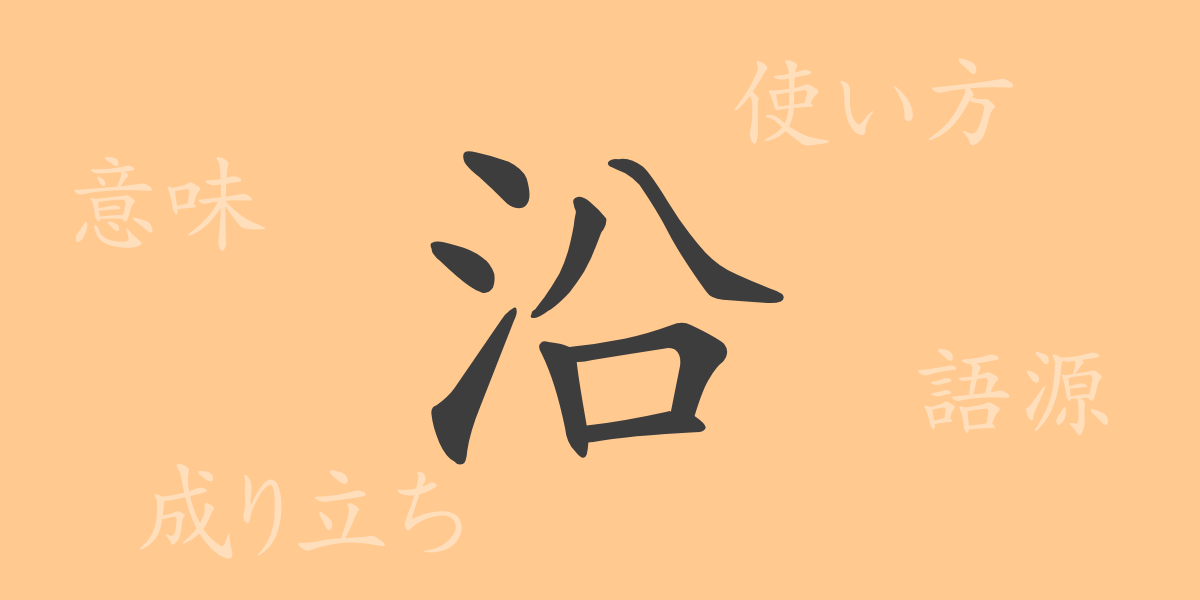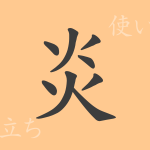“
Each character in the Japanese language has its own unique history and meaning, and understanding each one is key to deepening our comprehension of the language. In this article, we will focus on the common kanji “”沿”” (En), which is frequently used in daily life, and delve into its origin and compound words. By learning the rich expressive power of this kanji, let’s embark on a journey to rediscover the beauty of the Japanese language.
The Origin of 沿 (En)
The kanji “”沿”” is composed of “”水”” (Mizu), meaning water’s edge, and “”㳄”” (さんずいに””弋””, Sanzui ni “”yoku””), indicating the act of proceeding along the flow. In ancient China, it was used to express the act of traveling along the water’s edge, such as rivers or seas, and from there, it also came to hold meanings of “”following”” or “”conforming.””
The Meaning and Usage of 沿 (En)
“”沿”” has the meaning of being adjacent to a physical location or proceeding along a line or path, often used in the form of “”〜に沿って”” (~ni sotte). It can also be used metaphorically to mean following a policy or rule. For example, it can be used in phrases like “”川に沿って歩く”” (Kawa ni sotte aruku, walking along the river) or “”方針に沿って行動する”” (Houshin- ni -so-tte- koudou -suru, acting in accordance with a policy).
Reading, Stroke Count, and Radical of 沿 (En)
“”沿”” is considered a basic kanji in Japanese, and its reading and structure are as follows:
- Reading: The on’yomi reading is “”えん”” (En), and the kun’yomi reading is “”そ(う)”” (So(u)).
- Stroke Count: It consists of 8 strokes in total.
- Radical: The radical is “”水”” (Mizu, water).
Compound Words, Idioms, and Proverbs Using 沿 (En) and Their Meanings
There are numerous compound words, idioms, and proverbs containing “”沿,”” each with its own unique meaning and nuance. Here are a few examples:
- 海岸線に沿って (Kaigansen- ni- so-tte) – Expressing the state of being adjacent to the coastline.
- 方針に沿う (Houshin- ni -so-u) – Following a policy or plan.
- 沿線 (Ensen) – Areas adjacent to a railway line or other transportation route.
- 沿革 (Enkaku) – The historical evolution of an organization or system.
Conclusion on 沿 (En)
The kanji “”沿”” has evolved from its original meaning related to water’s edge to encompass not only physical spaces but also abstract meanings such as following policies or rules. By understanding and using this kanji, you can enrich your linguistic expression and broaden your communication skills. When encountering compound words or expressions using “”沿”” in daily life, take a moment to recall the history and meaning behind them, and appreciate the depth of the Japanese language.
“

























